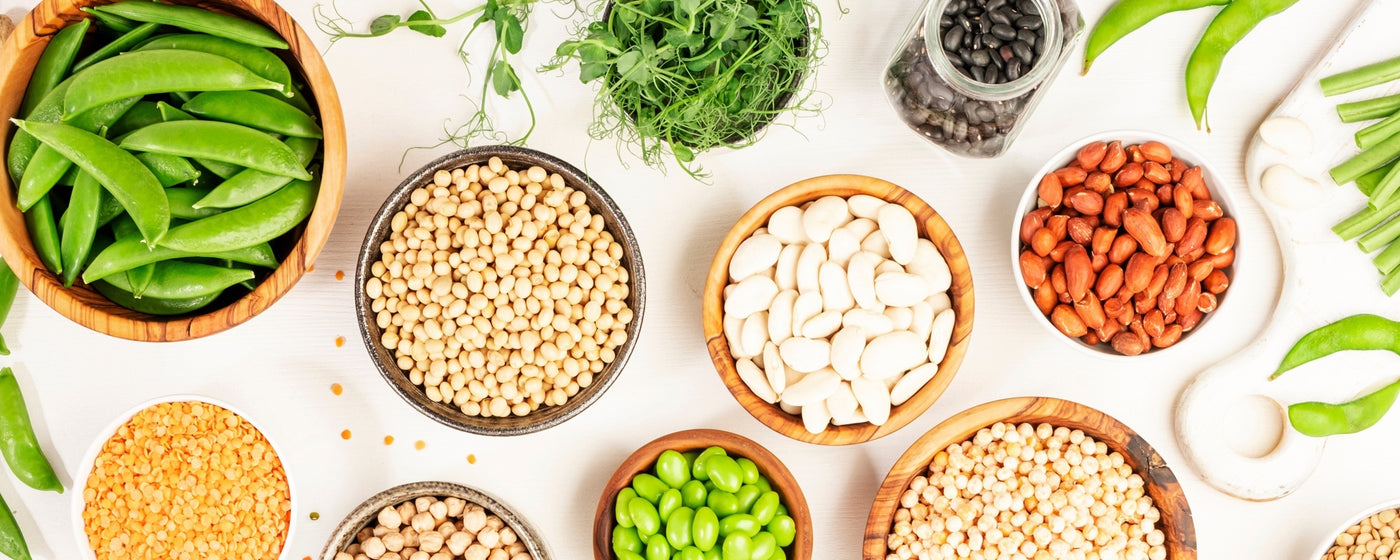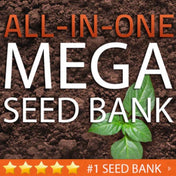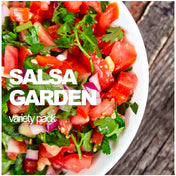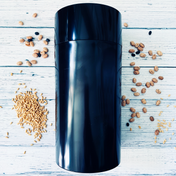
So you live on a boat or in an RV full time but you still are interested in having your own garden? GREAT, we'll show you how to get started! It's important to understand that regardless of where you live, and how much space you have, you can always grow something! The key to having a successful garden within a tiny area is choosing the right varieties. Below we'll go through some of the most popular crops for small space gardening that you can grow year-round, along with plenty of tips.
Plants That Grow Great in Small Spaces:
An easy way to eat better and save a good amount of money on your grocery bill would be to start growing your own herbs! Whether you're living in an RV or on a boat, all of these varieties require very little space. All you need is an area with good light, a few pots, and seeds!

CHIVES: Use chives in fresh salads, sauces or with other vegetables.

MINT: Mint lovers will find a wide variety of uses such as soups, salads and herbal teas.
Growing mint indoors is easy! Water your mint seeds well and place it in a location with indirect light, like a west or south facing window. Also try to keep the temperature of the room somewhere between 65-70 degrees F., no lower than 55 degrees F. at night. Mint plants need to be regularly watered, but not overly wet. When the soil on top is dry to the touch, then watering is needed. Just remember to keep it evenly moist. Rotate plants every 3-4 days to make sure the plants don't start to bend as they "reach" for any light coming through a window.

ROSEMARY: Rosemary is an herb that pairs wonderfully with meat, especially chicken and lamb.

OREGANO: When cooking Italian cuisine, don't forget the oregano. A great addition to many sauces.

THYME: If you cook fish often, consider growing thyme. It is also delightful on chicken.

BASIL: Growing basil can easily be done year-round, indoors. Because it thrives in temperatures slightly above 70° F, an indoor location is ideal.
Basil is planted in the spring and dies at the first fall frost. It can be grown year-round indoors or in frost-free climate. Basil also needs daytime temperatures over 70° F and nighttime temps over 50° F. Basil thrives in warmer temperatures. Sow your seeds outdoors in spring, after all danger of frost has passed. Basil needs at least 6-8 hours of full sun each day, so keep that in mind when choosing a location to start your seeds. Try to space your basil plants about 12 inches apart.

Tips for Growing on Your Boat or In Your RV:
- Start your seeds using a lightweight soil or seed starting soil pods. Place your planted seeds or tray of soil pods in a warm room out of direct sunlight. Artificial light will help, such as full spectrum bulbs or grow lights, but won't be necessary if your room/area has plenty of sunlight. You can be creative!
- Grow varieties you enjoy! Since you're short on actual growing space, pay close attention to what you're planting. A garden is no good if you're not able to harvest and use what you've grown.
- Choose varieties that have a short maturity date and that take up less space. If you want to try growing tomatoes, for example, choose a cherry or pear variety! Lettuce is also a very popular crop for those living in a boat or RV. It matures quickly and leaf varieties will offer a "cut-and-come" again feature, providing you with plenty of fresh greens for quite some time.
- Use quality soil and containers. Ensure healthy and happy plants by giving them the best chance of success!

Food You Can Regrow From Kitchen Scraps:
Don't throw away your garden food scraps. Instead, bring them inside and place them in some water. You'd be amazed at how many veggies and herbs you can regrow from scraps. Here's 10 of the easiest vegetables to re-grow in water alone! For best results, change the water often and do not let your bowl of water dry out.
-
Bok Choy
Simply cut off leaves at the bottom of the stalks and within a few days, new growth will appear.
Cabbage
Cut the bottom of the head off, & place it in a shallow bowl with a small amount of water. Don't let the leaves get too big, they'll taste better when small.
Carrot Greens
When you've finished eating the root of the carrot plant, save the tops! Cut them down to just a few inches and watch them produce new green leaves. Excellent for tossing into salads, make pesto or add to your green juices.
Celery
Cut the stalks down to about 2-3 inches tall. Place the base of the plant and small roots into a shallow bowl with a small amount of water and watch a new small stalk begin to grow from the center.
Fennel
Cut the stalk down to about 1-2 inches tall, leaving the roots intact. Place in a shallow bowl with water.
Garlic Chives
Place a small garlic bulb that has started to grow a green shoot into a shallow bowl of water. Within a few days, you'll be enjoying fresh garlic chives.
Green Onions
Cut the green part off of your green onion, and place the white stalk with the roots intact into a bowl of water. The stalk will regrow the green section that you cut off.
Lettuce
Remove the bottom of the head, leaving it about 1-3 inches long. Place that into a shallow bowl with water. It will regrow small lettuce leaves in the center.
Leeks
Place the bottom section of the stalk, about 2-3 inches long, into a bowl with water. It will re-grow the center portion of the leek.
Lemon Grass
Plant the same as you would a leek. Remove all but 2-3 inches of the stalk, place in about 1/2 inch of water and watch it regrow from the center.

















































